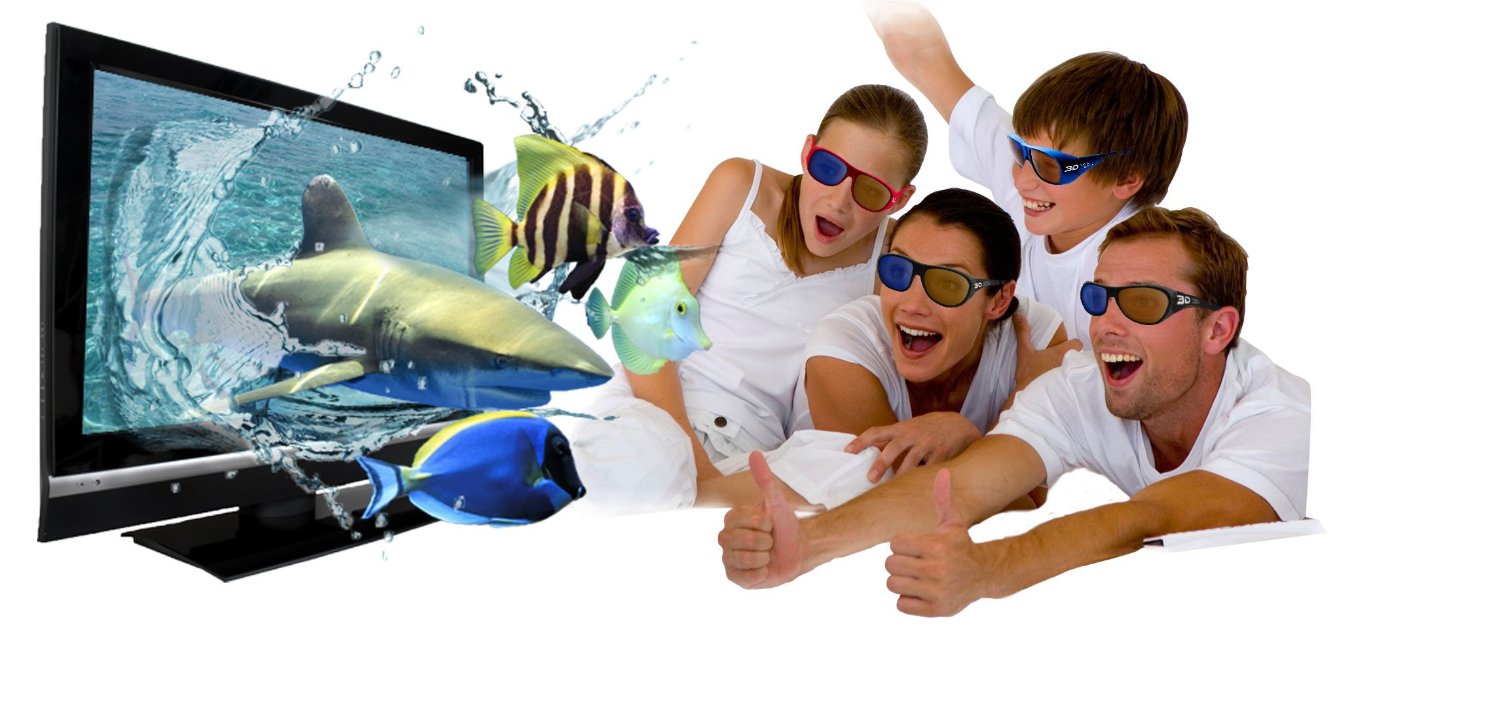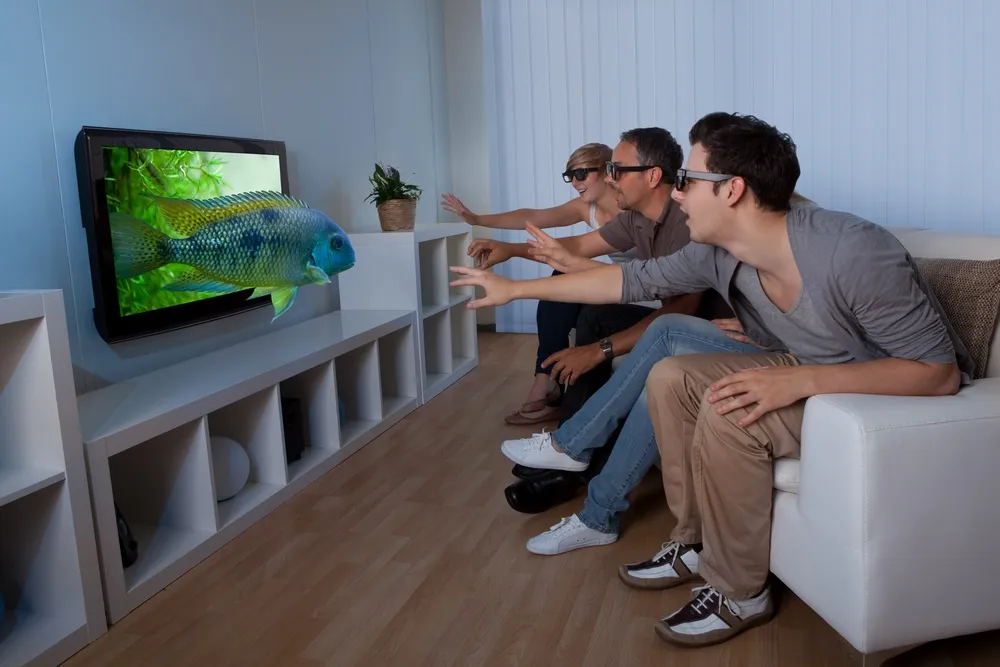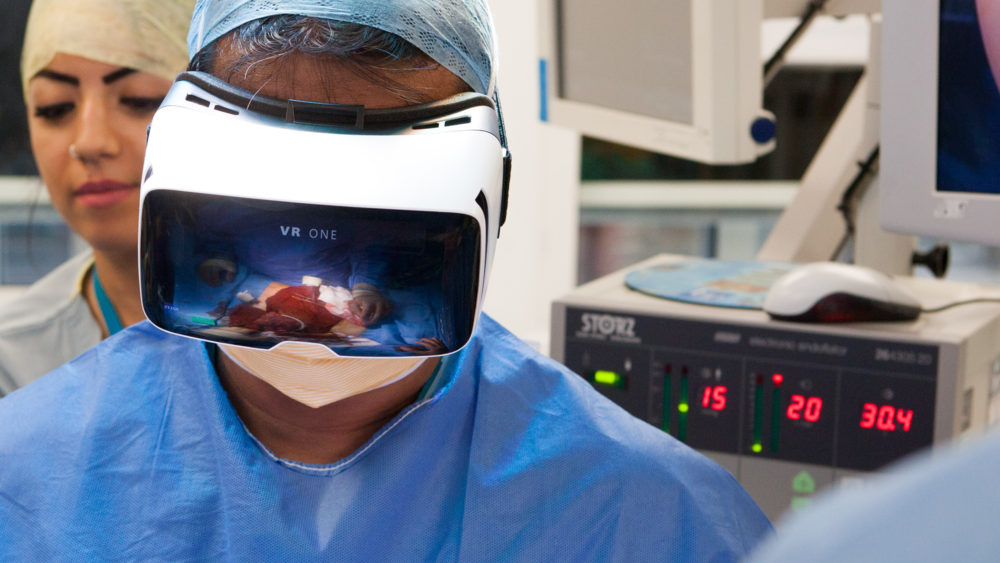It’s time to put a played-out argument to rest: Virtual reality is not going to end up like 3D TV.
The basis behind the argument is that they both are “3D” and require wearing some sort of headset or glasses. Saying VR is the same as 3D TV is like saying that looking out a window is the same as being outside, or that flying in an airplane is the same as skydiving. While VR and 3D TV share some characteristics, the smallest differences can have the largest impact – just 1.2% of our DNA separates us from chimpanzees, after all.
So what’s that 1% that makes 3D TV a fad and VR the last communication medium?
It comes down to tricking our brains. When you’re watching a 3D TV, it’s obvious to your brain what is happening – you’re looking at a screen on the other side of the room. This disconnect prevents any feeling of immersion. Split that screen in two and put it right in front of your eyes, and you would think your brain would again know what is going on.
But it doesn’t. It’s not so obvious that you’re just looking at a mini dual-TV attached to your face. This is the power of VR; you know it’s fake, but at the same time part of your brain really believes it’s real. If you have not a compelling VR experienced for yourself yet, it can be hard to believe that such a small difference could have such a profound result.
Just take a look at the people in the above video having visceral reactions in VR while playing The Brookhaven Experiment – you don’t see anything close to that happening with 3D TV. VR circumvents the rational part of our brain telling us that it’s fake, appealing to our deeper emotional responses. VR feels so real, that it’s helping heal people in reality — dealing with pain, PTSD, phobias, and loneliness.
This is why so many major corporations and universities are now backing VR as the ultimate medium. It has the potential to bring people, places, and experiences closer together than ever before.
Outside of the normal TV manufacturers, how many other major tech companies got involved with 3D TV? Where were the VCs and incubators focused on 3D TV? How many universities offered “3D TV studies” or majors? Was 3D TV used as a tool in the medical field? Did journalists and entertainers rush to 3D TV as the ultimate method of connecting with their viewers?
Contrast this to VR. Just about every major tech company is throwing their hat in the ring. Highly respected universities like Stanford, MIT, and CMU are pushing VR. Journalists have fully embraced VR as “the empathy machine,” and major entertainment companies from Fox to the NFL are backing it. So many of the top brands and companies are using VR, it would probably be easier to list those who aren’t.

Despite all of this validation, virtual reality is still in its early days and has a few years of development ahead of it. Mainstream adoption will take even longer. Headsets may be clunky, cabled beasts, but VR is already solving real-world problems. It will not fade away — no matter how long it takes to catch on with the general public.
While VR and 3D TVs are clearly two different creatures, there are lessons to be learned in 3D TV’s downfall. 3D TV failed for a few reasons.
It was expensive, lacked compelling content, and couldn’t match the quality and experience of watching a 3D movie in a theatre. VR is already having to face these same challenges — price, content, and most importantly, meeting expectations — to penetrate the consumer market.
However, VR is still such a useful tool for certain applications in its current state. Whereas 3D TV needed immediate mass adoption, VR can slowly work it’s way into our daily lives.
3D TVs were a gimmicky consumer electronic device. Virtual reality is a communication platform that will make the world a closer and better place. There is no comparison between the two.
—
This article was contributed by Phil Johnston. Phil is the CoFounder of Virt — a startup bringing reality into virtual reality with robots. Phil’s been working in VR for the past two years and is constantly thinking about the future of VR and robotics. You can visit him at Virt’s booth (e19) at VRLA this weekend to learn more. You can follow him on Twitter: @virt_phil.
Featured Image: Shutterstock































